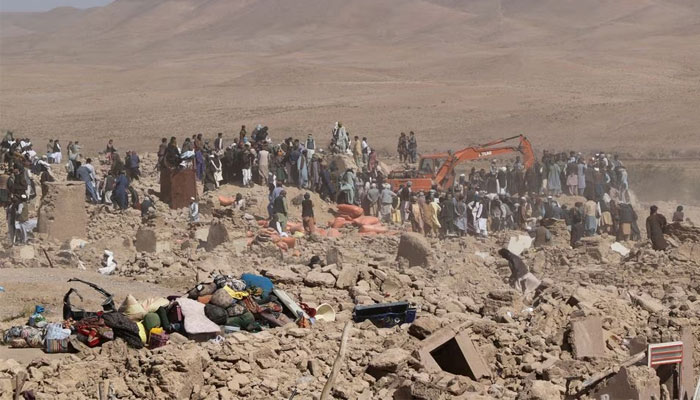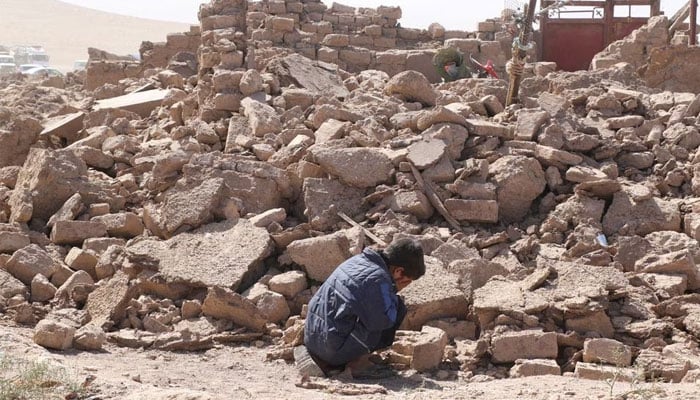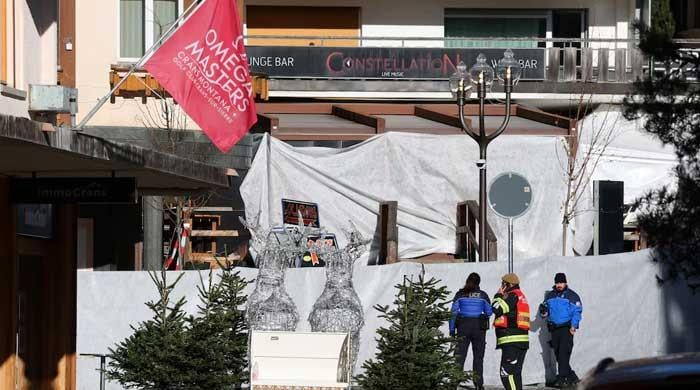At least one dead, dozens injured as powerful earthquake jolts Afghanistan
Same area of Herat was rocked by a magnitude 6.3 earthquake and eight strong aftershocks on October 7
October 15, 2023

At least one person was killed while more than 90 others have been injured after a strong magnitude 6.3 earthquake shook western Afghanistan on Sunday, in the same region where more than 1,000 people died in tremors last week.
Residents in the city of Herat had just begun returning to their homes again when the quake hit, after days of sleeping outside fearing aftershocks from last week's tremors.
"Herat's people are panicked and scared," said 27-year-old shopkeeper Hamid Nizami. "It's Allah's blessing that it happened during the day, people were awake."
Sunday's quake hit just after 8:00am (0330 GMT) with an epicentre 33 kilometres (20 miles) northwest of Herat city, capital of the same-named western province, and was followed by aftershocks of magnitudes 5.4 and 4.2, the US Geological Survey said.
Abdul Qadeem Mohammadi, head doctor at Herat Regional Hospital, said that "so far 93 injured and one dead have been registered". However, the National Disaster Management officials said they were still investigating the scale of destruction.
The same area of Herat was rocked by a magnitude 6.3 earthquake and eight strong aftershocks on October 7 (Saturday), which resulted in the collapse of large tracts of rural dwellings, the deaths of over 1,000 people, and hundreds more injuries, AFP reported.
Days later, with thousands of terrified residents left without shelter and volunteers digging for survivors, another tremor of the same intensity killed one person and injured 130 others. Over 90% of those killed in the quakes were women and children, UNICEF said on Wednesday.
"Women and children are often at home, tending to the household and caring for children, so when structures collapse, they are the most at risk," the agency´s Herat-based field officer Siddig Ibrahim said.
At least six villages in the rural Zinda Jan district have been completely destroyed and more than 12,000 people affected by the tremors, the United Nations said.
Crises mount in Afghanistan
Thousands of residents are already living in terror of aftershocks around the ruins of homes where entire families were wiped out in an instant.

Mohammad Naeem, a 40-year-old resident revealed that he lost 12 relatives, including his mother, after Saturday's earthquakes, saying: "We can't live here anymore. You can see, our family got martyred here. How could we live here?"
Earthquakes are frequent in Afghanistan and in the west and centre of the country and are mostly caused by the Arabian and Eurasian tectonic plates jutting against each other.
Providing shelter on a large scale will be a challenge for Afghanistan's Taliban authorities, who seized power in August 2021, and have fractious relations with international aid organisations.
"That area is very cold, staying there after the evening is very difficult," said public health minister Qalandar Ebad. "We know they could live there in tents for one month, but more than that would probably be very difficult."
Rural Afghanistan's homes are predominantly made of mud and wooden supports, lacking steel or concrete reinforcement.
This vulnerability, coupled with multi-generational extended families living under the same roof, has led to a severe humanitarian crisis, exacerbated by the withdrawal of foreign aid following the Taliban's return to power.
— Additional input from AFP









